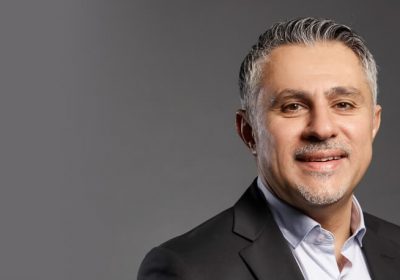
- Author: Alexandra Cain
- Posted: September 21, 2020
New Approaches to Working Capital Supporting CFOs Through COVID-19
By Alexandra Cain
Working capital has never been more important and CFOs around the world are laser-focused on this important aspect of their role. One business, global engineering professional services company GHD, has completely transformed the way it manages working capital during the pandemic, a strategy that is delivering huge dividends.
Over 180 CFOs and finance leaders were treated to an insightful ‘CFO Lunchtime Live’ panel discussion during which GHD CFO Phillip Bradley divulged exactly how he had managed to transform working capital across the business. He was joined by James Solomons, CFO of online reference checking firm Xref, who facilitates the discussion, as well as Iain Rolfe, country managing director of cash flow management platform C2FO and renowned economist Stephen Koukoulas.
At the start of the session Koukoulas deftly outlined some of the variables CFOs are juggling when managing working capital.
“Public policy is putting a floor under the extent of this downturn. Easy monetary policy and interest rates at all-time lows translate to very low rates on overdraft facilities and debt. This means better cash flow if businesses don’t have to spend as much servicing debt.”
Government stimulus packages such as JobKeeper have also helped businesses to maintain their workforce, which has been really important for cash flow and the labour market.
While these accommodations are helping working capital management, there are plenty of stressors in the operating environment CFOs must still manage. For instance, late payments have exploded in sectors that are starved of cash. Nevertheless, Koukoulas says this won’t necessarily emerge as a major problem, as long as economic growth starts to trend up late this year and into next year.
Worked example
With operations across Asia, Australia, Europe, North and South America and the Pacific and more than 10,000 people working across more than 200 offices, GHD CFO Phillip Bradley really has been at the pandemic’s coalface.
“There is a huge variety of different circumstances across our business. But right from the start of the pandemic, we understood the world had changed and none of us had been through anything like this before. This downturn was going to be much less predictable and more varied than other recessions,” Bradley says.
As a result, much of the senior management team’s focus moved to working capital. “We wanted to change the entire business’s attitude to working capital to give us security that no matter what happened, we would get through it. It’s been an amazing journey,” he says.
Bradley explains working capital is an outcome of the way GHD conducts its business. “It’s about our processes, our clients’ processes, the people that deal with those processes and their expectations. Sometimes it’s seen as a back office concept. But it works to its full potential if you take a systemic view and have really good communication about it across the business.”
At the start of the crisis, the executive team devised a plan to reduce working capital by 15 per cent by changing processes and client expectations. It transformed the way it invoices clients to slash the time taken between completing a program of work and sending out a bill for it.
“We smashed our targets within 75 days and we’ve kept to those levels ever since – I think we’ve created the muscle memory and the methodologies so our new approach is now business as usual,” says Bradley.
Importantly, GHD achieved its goals without stretching out payment terms to suppliers, which was important given its focus on being a good corporate citizen.
Commenting on how his clients have responded to the pandemic and cash management, C2FO’s Iain Rolfe says like GHD, many are using the platform to demonstrate their commitment to corporate social responsibility by ensuring their suppliers have access to cash.
“They are using C2FO to push liquidity into the supply chain. Some are looking to invest their cash for a good return and injecting money into the supply chain is low risk investment with a high return in an environment of persistently low interest rates.”
Iain Rolfe, Country Managing Director C2FO A/NZ
Rolfe says there is other reasons businesses are using the C2FO platform. “They may have enough working capital but they need revenue growth. Whatever their reason, businesses that have implemented a technology solution like ours have been able to adapt to their circumstances much faster than other organisations.”
Navigating a way out of the pandemic
Panellists and attendees revealed that while some sectors had suffered hugely through the pandemic, many companies and sectors were doing better than expected.
For instance, when polled about their approach to working capital during the webinar, 68 per cent of the finance executives who attended said they were initially worried but it’s now under control. Additionally, many (41 per cent) had been successful in obtaining funding during the pandemic.
Koukoulas noted there had been far less demand for the federal government’s business guarantee loan scheme than had been expected. “So things are not as bad as we first feared. Only $52 billion of the RBA’s $200 billion term funding facility had been taken up as at early September. It will be interesting to see how much of this capital will be drawn down over the coming months.”
So while companies are not yet out of the woods and it’s impossible to predict how the pandemic will continue to affect the economy, early signs are positive. The federal government’s staggered and measured withdrawal of its stimulus measures should also help create a soft landing for the economy.
Finance chiefs will get a clearer picture about this when the federal budget is handed down on 6 October, when more information will be available about whether there’s enough momentum in the economy to achieve a good recovery from the end of 2020 and into 2021. Watch this space.
The Working Capital CFO Lunchtime Live was proudly sponsored by C2FO

C2FO is working to deliver a future where every company in the world has the capital needed to grow. Our online platform matches more than $1.2 trillion of accounts payable and accounts receivable.
Through this and our suite of innovative financial products, we connect businesses with the cash they need. Name your rate, and the C2FO platform will match your capital request with the available funds in seconds.
Cash flow comes through early payment of invoices by your customers, A/R financing, and other data-driven funding options. C2FO is the world’s largest non-bank provider of working capital, serving over one million customers representing $10.5 trillion in annual sales across more than 180 countries.
For further details on how they can support your business please visit www.C2FO.com








